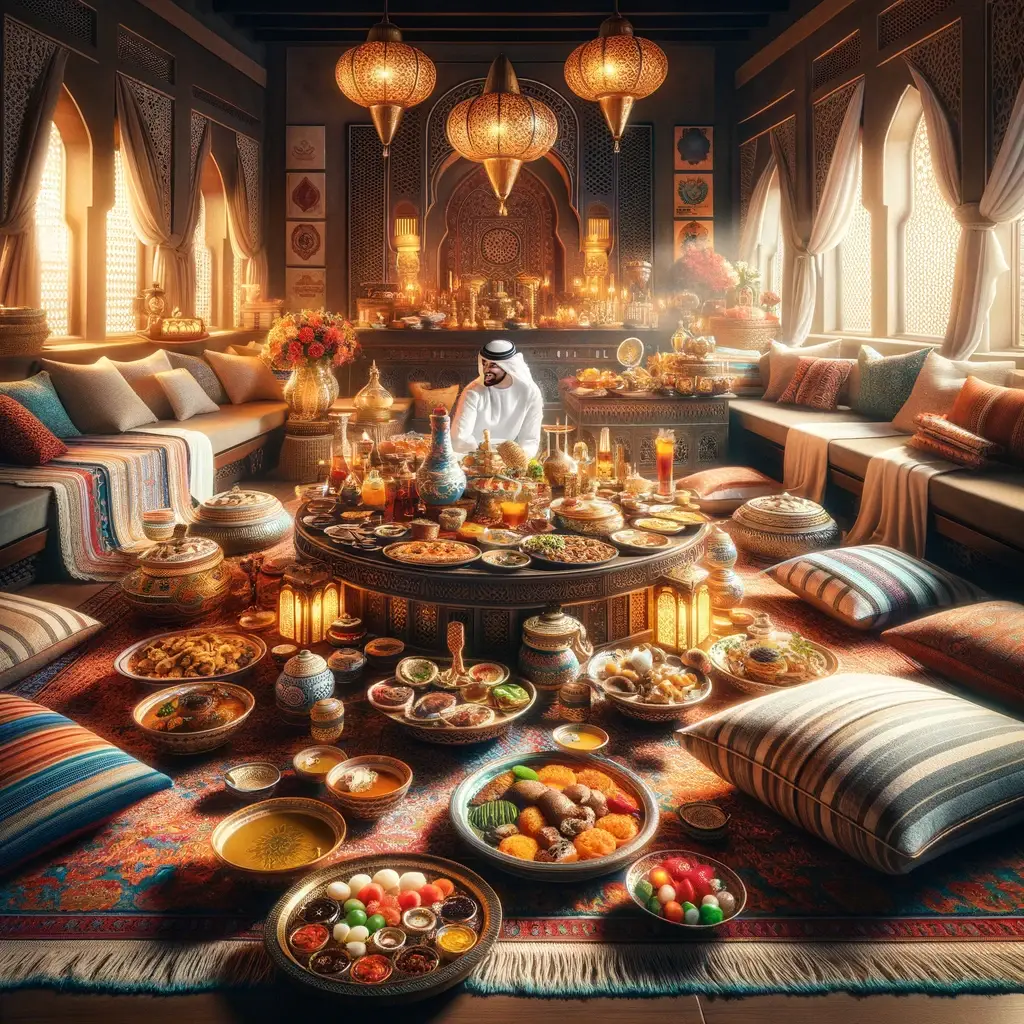

Emirati cuisine, a hidden gem in the vast culinary world, offers a tantalizing exploration of flavors deeply rooted in the rich heritage of the United Arab Emirates. This traditional cuisine, often overshadowed by its international counterparts, is a vibrant tapestry of tastes and aromas that deserves a closer look. The foundation of Emirati cooking is built upon simple, yet flavorful ingredients like rice, fish, and meat, with spices playing a pivotal role in creating its distinctive character. The traditional methods of cooking, which include slow-cooking and grilling, have been passed down through generations, preserving the authenticity and soul of the local fare.
The geographical location of the UAE, a crossroads of trade routes, has significantly influenced Emirati cuisine. This intersection of cultures has infused Emirati dishes with flavors from Asian and Middle Eastern cuisines, creating a unique culinary identity. From the succulent lamb in Harees to the rich, aromatic spices in Al Machboos, each dish tells a story of the land and its people, making traditional Emirati cuisine a journey through the UAE’s cultural and historical landscape.
My personal journey with Emirati cuisine began with my first visit to the UAE. The experience was nothing short of a revelation. The warmth and hospitality of the Emirati people were profoundly reflected in their food. Each meal felt like an invitation to explore and understand their culture and traditions. The rich, comforting flavors of dishes like Luqaimat, a sweet dumpling that’s a staple in Emirati households, left an indelible mark on my palate and heart.
As I delved deeper into the world of Emirati cooking, I discovered a cuisine that was both humble and opulent, mirroring the contrasting landscapes of the UAE. From the bustling souks serving aromatic street food to the lavish spreads in luxury hotels, Emirati cuisine offers a diverse range of dining experiences. This culinary adventure has not only been a journey of flavors but also a journey of understanding and appreciation for a culture that prides itself on its culinary heritage.
In this article, we will embark on a flavorful exploration of traditional Emirati cuisine, uncovering the secrets behind its most beloved dishes and the best places to experience authentic Emirati flavors. Join me as we discover the richness of a cuisine that is as enchanting as the sands of the Arabian desert.
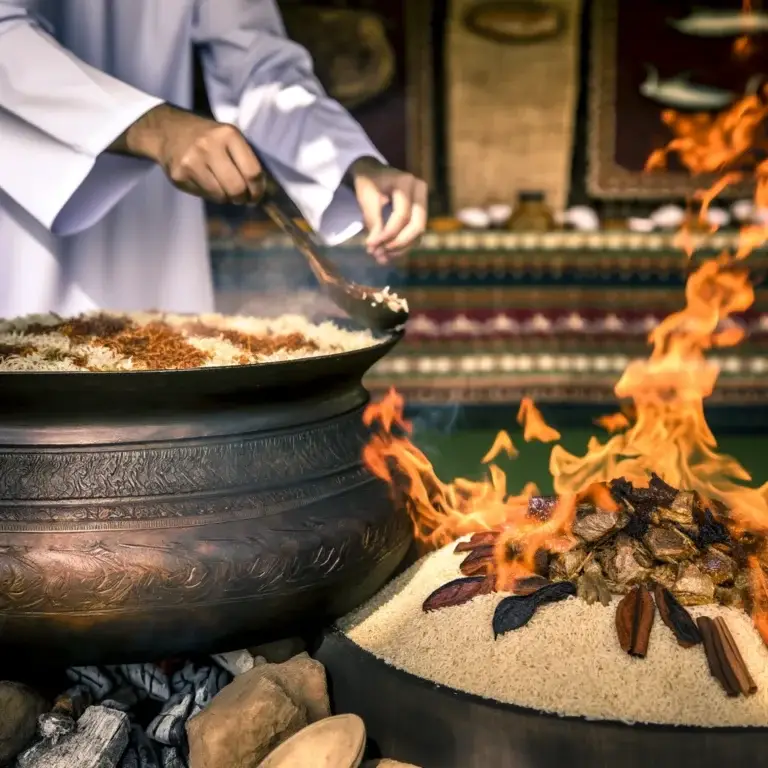
At the heart of traditional Emirati cuisine lies a modest yet fascinating array of basic ingredients that form the backbone of many beloved dishes. These staples, while simple, are steeped in cultural significance and are a testament to the resourcefulness of the Emirati people in using what the arid landscape provides.
Rice is a cornerstone in Emirati cooking, serving as the foundation for many dishes. It’s often flavored with spices like saffron, cardamom, and cinnamon, transforming it into a fragrant bed for meats and vegetables. The use of rice in dishes such as Al Machboos and Biryani reflects the influence of Asian cuisine on Emirati food.
Meats, particularly lamb and chicken, are central to Emirati meals, often slow-cooked to tender perfection. The traditional method of cooking meat in a pit, known as Madrooba, imparts a unique flavor that is both earthy and rich. Seafood also plays a significant role, given the UAE’s extensive coastline. Fish like hammour and safi are commonly used, usually grilled or served in a spiced stew.
Dates, a symbol of hospitality in Emirati culture, are not just a snack but an integral ingredient in both sweet and savory dishes. Their natural sweetness complements the savory flavors of meats and is also the star in desserts like Luqaimat, where they are often served alongside or incorporated into the recipe.
Spices and herbs like za’atar, turmeric, and bezar (a traditional spice mix) are the unsung heroes of Emirati cuisine. These spices are carefully used to enhance, not overpower, the natural flavors of the ingredients, creating a harmonious blend that is both subtle and complex.
My first encounter with the magic of Emirati spices was in a small, bustling market in Dubai. The air was fragrant with the scent of bezar, a blend I learned is unique to each cook, much like a signature. I remember being fascinated by how this blend, when added to a simple pot of rice and chicken, could create a dish so flavorful and comforting that it felt like a warm embrace.
Visiting a date farm in Al Ain offered me another glimpse into the significance of this humble fruit in Emirati culture. Tasting a freshly picked date, its sweetness exploding in my mouth, I understood why this fruit is revered and so generously shared in Emirati homes.
These experiences deepened my appreciation for the ingredients that are the essence of traditional Emirati cuisine. They are not just components of a recipe but carriers of history, culture, and the ingenuity of a people who have mastered the art of creating an abundance of flavors from the simplicity of their surroundings.
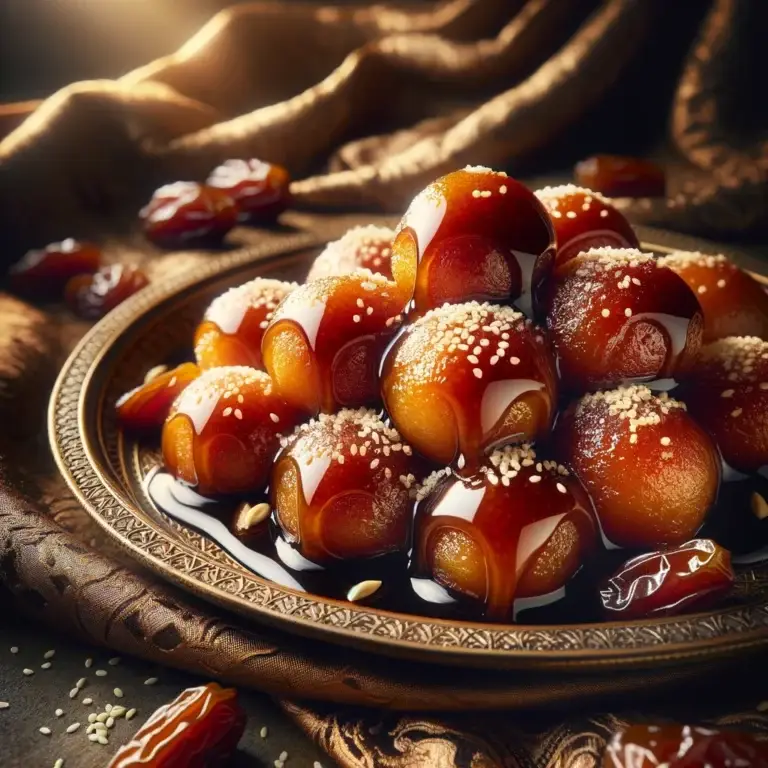
Traditional Emirati cuisine, with its rich flavors and diverse influences, boasts several iconic dishes that are a must-try for anyone exploring this culinary tradition. These dishes are not just meals but a reflection of the UAE’s history and culture.
One of the most celebrated Emirati dishes is Al Harees, known for its simplicity and heartiness. Made with just a few ingredients – wheat, meat (usually chicken or lamb), and a pinch of salt – the mixture is slow-cooked in a clay pot for hours until it reaches a smooth, porridge-like consistency. This dish, often served during Ramadan and Eid, symbolizes the communal spirit of Emirati culture.
Another staple is Al Machboos, a fragrant rice dish that is a testament to the Emirati love for spices. Rice is cooked with meat (chicken, lamb, or fish), onions, and a blend of spices including loomi (dried lime), saffron, and bezar. The result is a flavorful and aromatic dish that is a staple in every Emirati household.
For seafood lovers, there’s no missing the Samak Mashwi, a simple yet delicious grilled fish dish. The fish is marinated with a blend of spices and then grilled to perfection, often served with rice or flatbread.
My culinary journey through the UAE allowed me to experience these dishes firsthand, each encounter leaving a lasting impression. Tasting Al Harees for the first time, I was struck by its comforting simplicity. The dish, with its creamy texture and rich flavor, was a revelation in how minimal ingredients could create such depth of flavor. It was during a community iftar where I first tried this dish, and the sense of sharing and togetherness it evoked was unforgettable.
Al Machboos was another experience altogether. The blend of spices and the succulence of the meat created a symphony of flavors that was both exotic and familiar. Eating this dish in a local family’s home, I was struck by the pride they took in preparing this traditional meal, each family boasting their unique twist to the recipe.
Sampling Samak Mashwi by the seaside in Dubai was a highlight of my seafood adventures. The freshness of the fish, combined with the smoky flavor from the grill and the tanginess of the spices, was a perfect representation of the UAE’s coastal heritage.
These dishes, each unique in their way, offered me not just a taste of traditional Emirati cuisine but also a deeper understanding and appreciation of the culture and traditions of the UAE.
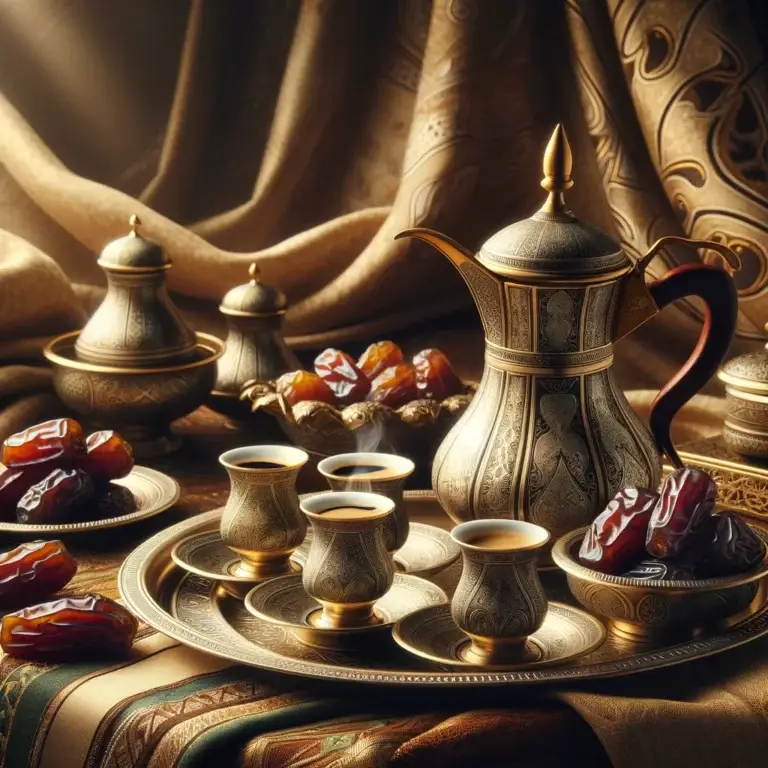
Emirati cooking is an art form that has been honed over generations, deeply rooted in the traditions and the environment of the UAE. The techniques used in preparing Emirati dishes are as important as the ingredients themselves, each method adding its unique touch to the final dish.
One of the most distinctive techniques in Emirati cooking is the use of the underground oven, known as the “Madrooba.” This method involves slow-cooking meat, often lamb or goat, in a pit dug in the ground. The meat is marinated with traditional spices and then wrapped in palm leaves before being placed in the oven. The slow cooking process, which can last for several hours, ensures that the meat is tender, flavorful, and infused with the earthy aromas of the palm leaves.
Another traditional technique is the preparation of bread. Bread is a staple in Emirati cuisine, and the most common type is “Khameer,” a flatbread that is often baked in a clay oven or on a hot griddle. The bread is sometimes flavored with spices like saffron or cardamom, adding a unique twist to this simple yet essential component of Emirati meals.
Grilling, or “Mashwi,” is also a popular cooking method, particularly for seafood and meats. The simplicity of grilling allows the natural flavors of the food to shine through, complemented by marinades and spices that add depth and character to the dish.
My foray into Emirati cooking began with an attempt to recreate Madrooba. Not having access to an underground oven, I improvised with a slow cooker. While I knew it wouldn’t replicate the unique flavor imparted by the traditional method, I was eager to try my hand at this quintessential dish. Marinating the lamb with a blend of bezar, garlic, and other spices, I let it cook slowly for hours. The result was surprisingly delightful – the meat was tender and flavorful, though I knew it lacked the authentic touch of being cooked in a palm leaf-lined pit.
Baking Khameer bread was another adventure. Mixing the dough and watching it puff up on the griddle was immensely satisfying. The aroma of the bread, especially when I experimented with adding saffron, was intoxicating. Serving it warm with a dab of date syrup was a simple yet profound pleasure, connecting me to the centuries-old tradition of bread-making in Emirati culture.
Grilling fish, Emirati style, became a regular activity in my culinary experiments. Using freshly caught fish, marinated in a mix of spices including turmeric and coriander, and grilling it to perfection was not just cooking; it felt like an homage to the UAE’s fishing heritage.
These attempts at Emirati cooking, while not always traditional, were a journey of discovery and appreciation for the techniques and flavors that define this rich culinary tradition.
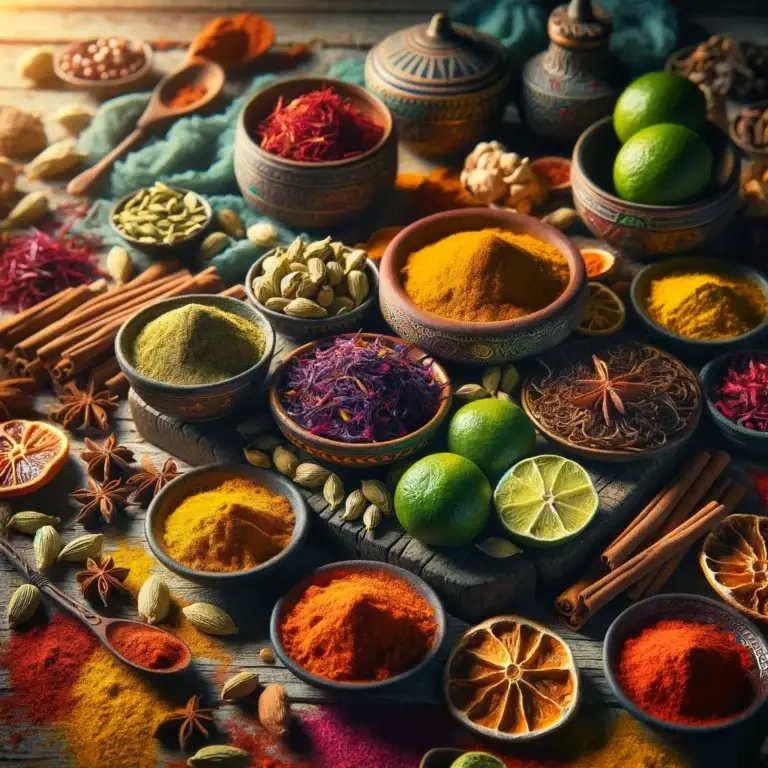
Embracing the dining customs of the UAE is an essential part of experiencing its rich culture. Emirati dining etiquette is steeped in tradition and reflects the values of hospitality and respect that are central to the local culture.
One of the first things to understand about Emirati dining etiquette is the importance of cleanliness and respect for food. It is customary to wash your hands before and after a meal. Eating is generally done with the right hand, as the left is considered impure in many Middle Eastern cultures.
When invited to an Emirati home, it is customary to remove your shoes at the door. This practice is a sign of respect for the host’s home. Upon entering, it is polite to greet everyone present with a warm ‘As-salamu alaykum’ (peace be upon you), and to wait to be directed where to sit.
Seating arrangements can be quite specific in Emirati culture. It is common for men and women to dine separately, especially in more traditional households. As a guest, you will often be guided to the most honorable place, which is usually the farthest from the door.
The meal often starts with the passing of dates and Arabic coffee. Refusing these is not considered polite, as they are symbols of hospitality. The coffee, served in a small cup without a handle, should be accepted with your right hand. When you have had enough, gently shake the cup from side to side before handing it back.
My experiences dining in the UAE have been nothing short of heartwarming. The hospitality extended by Emirati hosts is unparalleled. I remember being slightly nervous about adhering to the dining customs during my first invitation to an Emirati home. However, my hosts were incredibly gracious, guiding me through the nuances of their dining etiquette with kindness and patience.
The communal aspect of meals, particularly the sharing of dishes, was a beautiful expression of camaraderie and community. Sitting on the floor around a large platter of food, as is traditional in many homes, added an intimate and grounded feel to the meal. It was a delightful departure from the individualistic dining experiences I was used to.
One of the most memorable aspects was the continuous insistence by the hosts to eat more, a common practice in Emirati culture. This insistence is not just about the food but is a gesture of generosity and a way of making guests feel welcomed and cared for.
Through these dining experiences, I gained not just an appreciation for the flavors of Emirati cuisine but also a profound respect for the customs and values that define the Emirati way of life.
Discovering the best places to savor traditional Emirati cuisine is a journey that takes you through a variety of settings, from luxurious restaurants to quaint local eateries. Based on my personal visits, here are some recommendations that offer an authentic taste of the UAE’s culinary heritage.
When exploring Emirati cuisine, here are some tips to enhance your culinary adventure:
Remember, each Emirati dish tells a story of the land, its people, and their traditions. Exploring these places and dishes is not just about eating; it’s about experiencing the rich tapestry of Emirati culture and history.
The culinary landscape of the UAE is a dynamic and evolving tapestry, where traditional Emirati flavors meet modern culinary techniques, giving rise to a unique fusion that respects the past while embracing the future. This blend of old and new is not just about innovation for its own sake but a reflection of the UAE’s cosmopolitan nature and its role as a melting pot of cultures.
Chefs across the UAE are experimenting with Emirati cuisine, introducing ingredients and methods from around the world to create dishes that are both familiar and novel. For instance, the traditional Al Harees, known for its simplicity, is being reimagined with new ingredients like truffles and exotic mushrooms, adding depth and elevating it to a gourmet level.
Another example is the transformation of the humble Luqaimat, a classic Emirati dessert. Traditionally served with date syrup and sesame seeds, it’s now being offered with a variety of toppings, from chocolate and pistachio to exotic fruits, making it a versatile treat that appeals to a broader audience.
During my culinary explorations in the UAE, I’ve been particularly struck by the creativity chefs are applying to traditional dishes. At a restaurant in Dubai, I had the pleasure of trying a camel meat pizza, a perfect example of how traditional Emirati ingredients can be adapted into global cuisines. The pizza was a revelation, with the tender, flavorful camel meat complementing the rich, cheesy topping, all on a perfectly baked crust.
Another memorable experience was tasting a saffron-infused ice cream, a modern take on the traditional use of saffron in Emirati cooking. The ice cream was not only visually striking with its vibrant golden hue but also a delight to the palate, with the floral notes of saffron blending beautifully with the creamy texture.
These modern interpretations of traditional Emirati dishes are not just culinary experiments; they are a testament to the UAE’s forward-thinking approach and its openness to global influences while staying rooted in its heritage. This fusion cuisine offers a new way to experience Emirati culture, appealing to both locals and tourists alike, and contributing to the rich diversity of the UAE’s culinary scene.
In Emirati culture, food is much more than just sustenance; it is a profound expression of hospitality, tradition, and identity. The culinary practices of the UAE are deeply intertwined with the nation’s social fabric, serving as a bridge between the past and the present, and playing a pivotal role in communal and family life.
Hospitality is a cornerstone of Emirati culture, with food being the primary medium through which this hospitality is expressed. Offering food is seen as an act of generosity and respect, deeply rooted in Bedouin traditions where welcoming a traveler or a guest with food and drink was a sacred duty. This tradition continues today, with guests in Emirati homes often greeted with dates and Arabic coffee as symbols of welcome.
The preparation and sharing of meals are also central to family life and social gatherings, reinforcing bonds and ensuring the transmission of cultural values and traditions across generations. Festivals and celebrations are marked by specific dishes, such as Harees during Ramadan and Eid, embodying the cultural and religious significance of food in Emirati society.
My journey through the UAE was enriched by countless meals shared with locals, each offering a unique insight into the Emirati way of life. One of the most memorable was an iftar meal during Ramadan, where I was invited to join a family breaking their fast. The spread was a lavish array of traditional dishes, each with a story that was eagerly shared by my hosts. This experience highlighted the communal spirit of Ramadan, where fasting and feasting bring people together, fostering a sense of unity and belonging.
Another profound experience was participating in a traditional Emirati cooking class, where I learned not just about the techniques and ingredients, but also the stories and traditions behind each dish. The instructor, a local woman, shared anecdotes from her childhood, where she learned to cook by watching her mother and grandmother. This personal connection to the food added layers of meaning, making the dishes we prepared together not just meals, but stories of family, tradition, and love.
These interactions with locals and their willingness to share their culture through food have left a lasting impression on me. They underscored the role of food in Emirati culture as a means of preserving heritage, fostering community, and building bridges between people of different backgrounds.
Exploring the depths of Emirati cuisine has been a journey through time, culture, and flavor. From the simplest of dishes like Harees to the complex flavors of Al Machboos, each meal has offered a glimpse into the UAE’s rich heritage and the evolving landscape of its culinary traditions. The fusion of traditional techniques with modern innovations has not only preserved the essence of Emirati cuisine but has also introduced it to a global audience, ready to embrace its unique flavors and stories.
The role of food in Emirati culture extends far beyond nourishment. It is a medium of hospitality, a symbol of generosity, and a means of preserving and celebrating heritage. The communal nature of dining, the traditional practices surrounding food preparation, and the modern interpretations of classic dishes all reflect the dynamic, inclusive spirit of the UAE.
Reflecting on my culinary adventures in the UAE, I am struck by the warmth and generosity of the Emirati people, who are justly proud of their culinary heritage. The experiences I’ve had, from dining in the homes of locals to exploring the innovative dishes of high-end restaurants, have not only expanded my palate but have also deepened my appreciation for the cultural significance of food.
For those looking to explore Emirati cuisine, I recommend starting with the classics to build an understanding and appreciation of the foundational flavors. Then, venture into the modern interpretations to see how chefs are creatively honoring and reinventing these traditions. Whether you’re savoring a meal in a luxurious setting or enjoying a simple dish in a local eatery, the key is to approach each experience with an open mind and a willingness to explore the stories behind the food.
Finally, engage with the locals whenever possible. Their insights and stories will enrich your culinary journey, offering a more profound connection to the dishes you’re enjoying. Emirati cuisine is a gateway to understanding the heart and soul of the UAE, a journey that is as rewarding as it is delicious.
In conclusion, the enduring charm of Emirati cuisine lies in its ability to tell the story of a nation that is deeply rooted in its traditions while boldly facing the future. It is a cuisine that deserves to be celebrated, explored, and savored by all who wish to experience the true essence of the United Arab Emirates.
Emirati cuisine boasts a variety of dishes that reflect the country’s rich heritage. Popular dishes include Al Harees, a comforting wheat and meat porridge; Al Machboos, a fragrant rice dish seasoned with spices and cooked with meat or fish; Luqaimat, sweet dumplings drizzled with date syrup; and Biryani, a spiced rice and meat dish influenced by Indian cuisine. Each dish offers a unique taste of Emirati culture and traditions.
While traditionally Emirati cuisine relies heavily on meat and fish, there are several vegetarian options available, thanks to the diverse influences on the UAE’s culinary scene. Dishes like vegetable Saloona (a hearty stew), Tabbouleh (a Levantine salad), and various rice dishes can cater to vegetarian preferences. Many restaurants are also accommodating and can offer vegetarian versions of traditional dishes upon request.
Emirati cuisine is known for its aromatic blend of spices, which include cardamom, saffron, cinnamon, turmeric, and bezar (a traditional spice mix that includes cumin, coriander, fennel seeds, and black pepper). These spices are used to flavor dishes subtly, adding depth without overpowering the main ingredients.
Finding authentic Emirati cuisine outside of the UAE can be challenging, as it is less internationally known compared to other Middle Eastern cuisines. However, with the increasing global interest in culinary diversity and the UAE’s growing expatriate community, Emirati restaurants and food experiences are gradually becoming more accessible in major cities around the world.
While sharing similarities with other Middle Eastern cuisines, such as the use of rice, meats, and spices, Emirati cuisine has its unique characteristics and dishes. The influence of the desert environment, maritime heritage, and Bedouin traditions is evident in the preference for certain ingredients like dates and local fish. Additionally, the historical trade routes have introduced flavors from South Asia, Persia, and East Africa, creating a distinctive culinary blend.
The best way to experience traditional Emirati cuisine is by dining with a local family, as this offers an authentic insight into the preparation, flavors, and customs surrounding Emirati food. For travelers, visiting traditional restaurants and participating in food tours or cooking classes are excellent ways to explore the cuisine. Engaging with the local food scene, asking for recommendations, and being open to trying different dishes will enrich your culinary journey in the UAE.